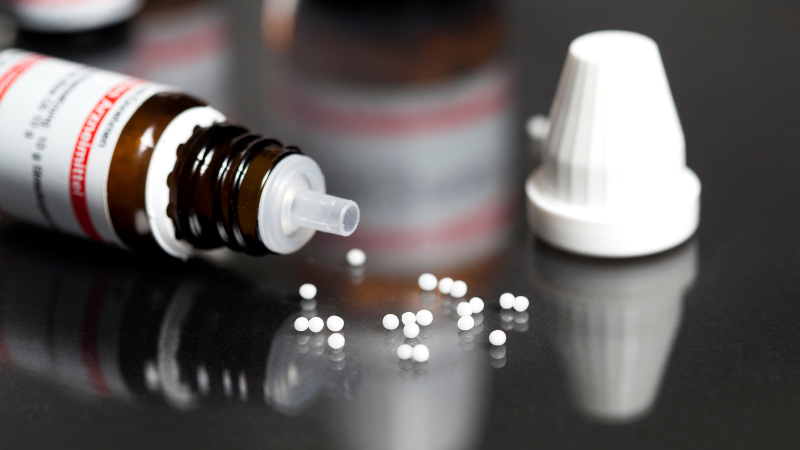Homeopathic treatment offers a natural, safe, and highly effective solution for Chikungunya fever. Unlike conventional medications that only suppress symptoms, homeopathy works holistically, addressing the root causes while enhancing the body’s immunity. This approach ensures complete relief from symptoms, promotes faster recovery, and minimizes post-viral complications, all without any side effects.
At Dr. Beri’s clinic, every treatment plan is personalized, focusing not just on alleviating pain, but also on long-term wellness and prevention of recurrence.
What is Chikungunya?
Chikungunya is a viral infection transmitted by mosquitoes, primarily by the Aedes aegypti and Aedes albopictus species. These mosquitoes are the same carriers of dengue and Zika viruses. While Chikungunya is rarely life-threatening, the symptoms, especially joint pain and fatigue, can seriously affect daily life.
The name “Chikungunya” comes from the Kimakonde language, meaning “to become contorted,” referring to the stooped posture caused by severe joint pain. Once infected, most patients develop lifelong immunity, reducing the risk of reinfection.
Symptoms of Chikungunya
Symptoms usually appear 2–12 days after a mosquito bite.
Common symptoms include:
- High fever – often sudden and intense
- Severe joint pain – commonly in hands, feet, and knees
- Muscle pain and stiffness
- Headache and dizziness
- Fatigue and weakness
- Skin rashes – may appear a few days after fever
- Nausea or mild digestive disturbances
Post-viral complications:
Some patients may experience prolonged joint stiffness or pain for months or even years, especially in the small joints of hands and feet. Rarely, complications can affect the heart, eyes, or nervous system, but these are uncommon.
Causes and Transmission
The Chikungunya virus spreads through mosquito bites, particularly in areas with stagnant water and high humidity. Mosquitoes breed in puddles, drains, plant pots, and uncovered containers, making urban and semi-urban areas especially vulnerable.
Environmental and seasonal factors also play a role:
- Rainy season: Mosquito populations increase, raising infection risk
- Marshy areas: Ideal breeding grounds for mosquitoes
- Crowded urban settlements: Increase chances of mosquito-human contact
What are the Risk Factors for Chikungunya?
Certain conditions increase susceptibility:
- Living in Marshy or Humid Areas : Places with lots of wet, marshy land are a favorite hangout for mosquitoes, especially the ones that spread Chikungunya. So, if you live in such areas, you have a higher chance of catching it.
- Weakened Immune System: If your body’s ability to fight off diseases is not at its best, you’re more vulnerable to getting a severe case of Chikungunya.
- Being Near Stagnant Water: Mosquitoes love breeding in still water. That’s why Chikungunya is more common in areas with puddles of water, like Construction sites, drains, and puddles.
- Rainy Season: Mosquitoes multiply a lot during the rainy season. That’s why diseases like Chikungunya are more likely to spread during this time.
- Travel to Endemic Areas – Regions where outbreaks occur frequently
Recovery Time and Post-Chikungunya Care

- Acute phase: Typically lasts 7–10 days, during which fever, joint pain, and fatigue are most intense
- Recovery phase: Most patients recover fully in 1 month, but lingering joint pain and weakness can last 6–24 months in some cases
Post-Chikungunya care tips:
- Gentle exercises like yoga or physiotherapy to reduce joint stiffness
- Adequate rest and sleep for body recovery
- Balanced diet rich in antioxidants, vitamins, and minerals
- Hydration to support detoxification and immune response
- Homeopathic follow-up to manage persistent joint pain or fatigue
Prevention Tips
Preventing Chikungunya focuses on reducing mosquito exposure and controlling breeding sites.
Environmental Measures:
- Remove standing water around homes and offices
- Use mosquito repellents and insecticides
- Cover water tanks and drains
Personal Measures:
- Apply mosquito repellent creams before going outdoors
- Wear long-sleeve shirts and full-length pants
- Sleep under mosquito nets or screens
- Avoid areas with heavy mosquito activity during peak hours
Difference Between Chikungunya and Dengue
| Feature | Chikungunya | Dengue |
|---|---|---|
| Virus Family | Togaviridae (Alphavirus) | Flavivirus |
| Mosquito Vector | Aedes aegypti / albopictus | Aedes aegypti |
| Key Symptom | Severe joint pain | Severe bleeding / thrombocytopenia |
| Mortality Risk | Low | High in severe cases |
| Recovery Time | 1–2 weeks (fever), joint pain may persist longer | Usually 1–2 weeks, but risk of severe complications |
Although both diseases share mosquito vectors and early symptoms, Chikungunya is less fatal but more likely to cause prolonged joint pain, while dengue carries a higher risk of severe complications.
Best Homeopathic Medicines for Chikungunya

Homeopathy offers safe, natural, and effective remedies to relieve fever, joint pain, and lingering post-viral symptoms:
Top homeopathic medicines for Chikungunya are Eupatorium perf, Bryonia, Gelsemium, Aconite and Rhus tox.
- Eupatorium Perf: Indicated in cases of intense bone-breaking pains accompanied by and remaining after the fever has subsided. Sometimes Eupatorium works for the pain which has remained for 2 months even after fever has subsided.
- Bryonia: For people suffering from stiff, reddened and painful joints that are worse on the slightest motion.
- Gelsemium: Chikungunya fever with chills all over the back but thirst is absent. Extreme weakness and violent headache are also well relieved with this medicine.
- Aconite: Joint pains during and after fever, worse at night and by cold air. Joints are red, swollen, shining and sensitive to touch.
- Rhus tox: It is one of the best remedies for Chikungunya and has bone pains with chills more in the evening, and accompanied by violent shivering. Pains are better by movement.
Related read: Homeopathic Medicines for Knee Pain
Looking for the Best Homeopathic Treatment for Chikungunya?
Don’t just manage fever and joint pain—address the root cause naturally. Our expert team provides personalized homeopathic remedies for Chikungunya to support complete recovery.
- Individualized, evidence-based care
- Gentle, side-effect–free medicines
- Convenient online homeopathy consultation
Prefer a quick call? +91 8602000033
Lifestyle and Diet Tips for Recovery
Homeopathy works best when combined with healthy lifestyle habits:
- Diet: Include fruits, vegetables, and anti-inflammatory foods
- Hydration: Drink plenty of water and herbal teas
- Rest: Avoid overexertion during acute recovery
- Gentle Exercise: Yoga, stretching, and walking help prevent joint stiffness
- Mental Health: Relaxation techniques and mindfulness reduce stress, aiding recovery
Frequently Asked Questions about Chikungunya
Rarely. Most patients develop lifelong immunity.
Typically 2–4 weeks, but chronic pain may persist for months in some patients.
Yes. Homeopathy is gentle, natural, and safe for all ages.
Seek medical advice if you experience high fever, severe joint pain, or unusual complications.
Both share mosquito vectors, but Chikungunya causes severe joint pain, while dengue can lead to serious bleeding and organ complications.
Chikungunya Holistic Treatment Approach with Dr. Beri
Dr. Beri’s homeopathic care goes beyond symptomatic relief.
It focuses on:
- Boosting immunity to prevent recurrence
- Personalized remedies based on symptom patterns and patient constitution
- Diet and lifestyle guidance to support full recovery
- Monitoring post-viral complications, ensuring joint health and overall well-being
Patients experience not only relief from fever and pain, but also improved energy levels and mobility over time.

N.K.B. Homeopathic Medical College & Hospital Kolkata
30 Years Experience
An experienced homeopathic practitioner, transforming lives for three decades with his compassionate care and holistic approach, bringing relief to countless patients.





